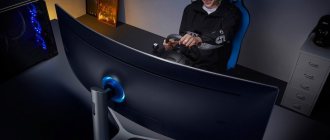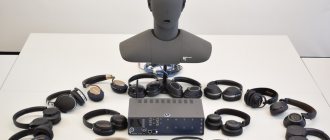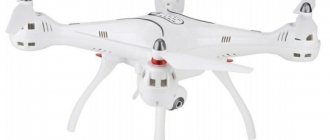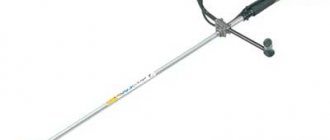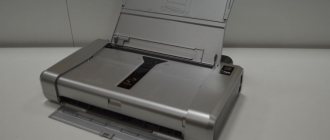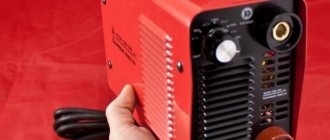Photo: roadandtrack.com
“Which Russian doesn’t like driving fast?” - perhaps the most banal beginning for an article devoted to radar detectors. Therefore, let's reformulate a little: “What kind of Russian likes to get fines?”
That's right, none! Therefore, let's figure out together how to choose a radar detector wisely in order to keep the family budget intact.
Radar detector or anti-radar Detection distance Filtering false alarms and signature mode Frequency range and types of GPS radars Mounting methods Information display Power type Hybrid devices Additional functions Radar detector or program on a smartphone Abroad Checklist Results
Radar detector or antiradar
The terms “radar detector” and “radar detector” are not synonymous. Radar detectors are passive devices that only pick up signals from traffic police radars. Radar detectors are active devices that create interference by blocking the operation of radar installations.
The radar detector puts your car into stealth mode for radar installations, allowing you to break the speed limit. In Russia, as in most countries of the world, radar detectors are prohibited. We will talk exclusively about choosing radar detectors in 2021.
What is the difference between a radar detector and an anti-radar
Radar detectors are often called radar detectors, but they are not. These are completely different devices with different functions and purposes.
The radar detector picks up the signal from the police radar and reports this information to the driver. The driver slows down and drives through the area where the radar is operating at the speed limit. A radar detector allows you to avoid a fine for exceeding the speed limit.
The radar detector not only picks up the signal from the police radar, but also “jams” it, creating special interference, thereby preventing you from setting the speed of your car, which interferes with the work of the road inspector.
The use of radar detectors in Russia is prohibited, while the use of radar detectors is permitted. If an inspector finds a radar detector in your car, it will be confiscated and a fine of one to five thousand will be issued.
Each country has its own rules; in many European countries it is prohibited to use not only radar detectors, but also radar detectors. Therefore, when driving your car abroad, it is worth clarifying the rules for using these devices in a particular country.
Detection distance
The most important parameter that affects the quality of a radar detector is the detection distance of police radars. It depends on the antenna power and the landscape. On long, flat sections of road, the signal can be transmitted for many kilometers. There you can detect the radar at a distance of about ten kilometers, although the stated detection range in the instructions will not exceed, for example, two kilometers.
It would seem, why do you need to “catch” the radar ten kilometers away? Long range can be useful on long stretches of road with minimal traffic - you may be able to hear an officer spotting another driver many kilometers ahead of you. Even if after this not a single car passes or the inspector with the radar is hiding, you will be prepared in advance for the meeting.
When you drive through difficult terrain, hills, trees, and curves can block and absorb the signal. In such conditions, you can get a response range of two hundred to three hundred meters, or even less.
It is very difficult to find out about the antenna power and the current operating range from the technical characteristics indicated in the instructions or advertising materials. The only indicator of how powerful the antenna is installed in a radar detector can be its price - if the manufacturer does not save on components, he will not be able to significantly reduce the prices of the devices. To give you a little orientation, budget recorders cost up to 3 thousand rubles, prices for high-end devices start from ten thousand rubles. Everything in between can be roughly classified as a “medium budget”.
In normal situations with a minimum of natural obstacles, inexpensive models will do an excellent job of detecting radars, but in more difficult reception conditions they may fail. High-end devices work equally well in both simple and difficult terrain. So the general rule applies here: the more expensive the detector, the easier it is for it to cope with difficult conditions.
For example, the Neoline X-COP 7500s radar detector (costs about 10 thousand rubles) has a stated detection range of up to 1.5 km. For the budget DIGMA SafeDrive T-600 (costs about 3 thousand rubles) it is not much less - 1 km. But in practice, the Neoline device copes better with roads with a lot of turns and through wooded areas.
Well-known brands do not skimp on the radar part, so purchasing products from one of the companies that have been on the market for a long time will be the right decision. Veterans include Neoline, Sho-Me, Play-me, Cobra, Inspector, iBOX.
By choosing models from well-known brands, you significantly reduce the risk of getting a device with a weak antenna. The photo shows Neoline X-COP 7500s. Photo: neoline.ru
As the radar detection distance increases, the amount of detected interference also increases. This is especially true when traveling in the city. This is where another characteristic comes into play - the ability to filter out false signals and interference.
Leading group
At the beginning of this year, only two signature devices were on sale - under the I brand: Silent and Soft models. In the spring, we tested the pre-production SilverStone F1 Monaco S. And by the beginning of summer, the new technology had become so generally applicable, as if we had never lived without it. Taking products that were already familiar to us, we selected a large company for them.
- Supra
brand
the DRS-SG151V
radar detector for testing . - Sho-Me
website lists as many as five new-fangled devices.
We take Signature Smart
and
G‑800 Signature
, since representatives of the company assured that these models work differently. By the way, the G-800 Signature is a further development of the 800 series, which has repeatedly won in our tests and is still one of the most popular on the market. - The Inspector GT
also acquired a signature version (called GTS), but such a device has not yet gone on sale, and there was no pre-production sample at the dealership. As an alternative, we were offered the Tomahawk Navajo S (also not yet in production), which is positioned as a more premium device. Let's take it! - Neoline X-Cop 7500s
, strictly speaking, is only half signature. It filters false signals, checking them against the “handwriting” stored in memory, but it recognizes police radars the old fashioned way, without highlighting a specific model. Well, it will be interesting to evaluate such an implementation.
In many previous tests, we also took the reference model - usually the winner in last year's test: it was interesting to understand how much progress the developers have made.
The volume control wheel and turning off the gadget on the left side of the case is an archaic solution, but convenient. Only SilverStone F1 Monaco S and Sho-Me G‑800 Signature remained faithful to him. This made it possible to assign only one function to each of the top keys. Six models have four buttons, and some are dual-purpose. It’s not difficult to understand them, but in the comparative test we had to be very careful: the distribution of functions between the devices does not coincide. Neoline went its own way: on the top of its body there are only three keys instead of the usual four, and the volume is controlled by buttons on the right side.
This time the “black sheep” was chosen according to a different principle. Its role was played by Playme Quick 2, a classic radar detector without signature technology. Its “trick” lies in its high protection against interference and the presence of the anti-CAS function, which filters false signals from the vehicle’s active safety systems (blind spot scanner, collision avoidance complex). Other manufacturers teach this to their devices, but Playme especially focuses on such nuances. Although, in essence, the principles of its operation are identical to those inherent in the Neoline X-Cop 7500s model, in which the letter s hints at the signature essence. If you believe the developers, Quick 2 should be very “quiet” and without newfangled bells and whistles. Let's check!
Filtering false positives and signature mode
False alarms have always been one of the serious problems with radar detectors. Detectors can respond to cruise control systems of passing cars, automatic doors in supermarkets and other impulses, mistaking them for police radar signals.
To reduce the number of false positives, there are two main ways: reduce the overall sensitivity of the detector and/or use special filters that will filter out extraneous signals.
Today, most models are equipped with special modes with different levels of sensitivity and activation/deactivation of filters. Check that your device supports two main ones - “City” and “Highway”.
In the “City” mode, the sensitivity of the detector is reduced and filters are turned on. In the “Highway” mode, the detector operates at full power, because the number of obstacles on the highway is minimal, and due to the higher speed of the vehicle, the detection distance should be maximum. The more expensive the radar detector, the more options there are to customize the filtering and sensitivity of your device.
The ability to select the detector operating mode is a mandatory requirement. Pictured: Whistler 438 ST. Photo: free-navigator.ru
“City” and “Highway” modes are provided in many models - from budget ones like the Sho-Me 520 STR to high-end options like the Neoline X-COP 8700s. As in the case of detection distance, the rule works - the more expensive the radar detector, the more effective its filtering and the lower the number of false alarms. Large manufacturers use their own proprietary filtration systems, for example, Playme's anti-CAS system effectively cuts out interference from the security systems of other cars.
Several years ago, radar detectors began to use additional technology that helps reduce the number of false alarms. The signal of each type of radar has a certain set of parameters (duration, sequence, and others) - the so-called “signature” or “signature” of the radar. Signature radar detectors store such “signatures” for stationary and mobile systems common in Russia. “Signatures” of the most common types of interference are also stored. Having detected a signal, the system checks the database and determines whether it is real radar or interference. Thanks to this, the number of false positives is sharply reduced.
However, signature radars have their drawbacks. They can sometimes miss single "shots" from hand-held radars. In addition, not all existing radars may be included in the database. Signature mode is more suitable for driving around the city, where there is a lot of interference. And for the route it is better to set a lower filtration level.
Signature mode is found in radar detectors of the mid-price category (from about 6,000 rubles) and above: for example, in the Sho-Me G525 Signature model.
The presence of a signature mode or its own proprietary filtering system like Playme's anti-CAS or Neoline's Z-filter is a big plus for a radar detector.
Frontal attack
The mobile examiners were our old friends - the Visir, Binar and laser Amata devices. Everyone recognized the latter correctly, except for the Supra, which did not respond to this speed meter. Neoline warned the driver with a “Laser” signal, and the non-signature Playme Quick 2 showed “Amata” on the display. The fact is that some manufacturers write down the “handwriting” of this radar separately in their devices, as is the case with Strelka. Quick honestly deserved a plus for meticulousness.
In the duels with Binar, two surprises arose. The Sho-Me G‑800 didn’t notice it at all, although in previous tests it did it perfectly. And Playme Silent showed the standard at what level signature technology is now. In purely signature mode, he called Binar Spark. On the highway, over the course of a kilometer of distance I changed my mind three times, alternately calling the radar Iskra, Krechet and, finally, Binar.
Neoline has always surprised us with original and sometimes controversial solutions. So it is this time. The X-Cop 7500s radar detector has a speaker located at the bottom. In order for the signals to be heard, the device must be mounted on the glass using a bracket with suction cups. All other manufacturers have also provided the possibility of placing it on a sticky mat, which is included in the kit.
SilverStone and Tomahawk devices behaved more correctly than others. They raised the alarm a kilometer before the radar, but without specifics, indicating only the K-band on the screen. 850 meters away the signature was triggered and the alert changed to “Binar”. The gadgets did not leave the driver without warning, even though they themselves had not yet identified the opponent. Today, the signature should remain an assistant to a simple radar, and not dominate it.
Sight - The radar is not too difficult to detect. Nevertheless, only SilverStone and Tomahawk confidently identified it (plus the “semi-signature” Playme and Neoline as a source of signals in the K-band). The “eight hundredth” Sho-Me, as in the case of Binar, remained silent. However, the trend. We assume that the once excellent model was simply ruined in the process of adapting to the signature. The manufacturer assured that the development has not yet been completed. Indeed, the specific specimen that was tested is frankly crude.
Sho-Me Signature Smart, Playme Silent and Supra DRS-SG151V recognized the Visor in the K-band in the “track” mode. We switched the radar detectors to detect solely by signatures - and there was silence! Everything is logical: the general K-band in them is blocked as false, and the gadgets did not identify Vizir’s “handwriting” - this is a serious drawback. Another confirmation that it is too early to give newfangled technology much freedom.
Frequency range and types of radars
The next characteristic that must be indicated in the characteristics of the model is the frequency range that the radar detector can detect.
Traffic police officers have two main types of radars - radio frequency and laser. RF radars are simpler to assemble and design, so they are more common.
There are many different radio frequency bands that radars operate on (K, Ku, X, and so on). Usually the box or instructions for the radar detector will tell you what frequencies it detects.
Advanced devices, like the Neoline X-COP 9300c, can flexibly configure filtering modes and disable certain ranges. Photo: ichip.ru
In Russia, they mainly use only the K-band. Outdated radars, for example, Sokol and Barrier, operated in the X-band, but since 2012 they have officially ceased to be used. Therefore, it is better to disable the X-band to reduce the number of false positives.
Other ranges that are often mentioned in the characteristics of radar detectors (Ka, Ku, POP, RDR and others) are not yet used in Russia. Ka-band is used by American radars, and Ku - by European ones.
All modern models of radar detectors detect all used frequencies, so it makes no sense to check the list of operating frequencies of each model you like.
There is one exception to this rule. This is the Strelka pulse radar, which for a long time remained invisible to many radar detectors. Over time, Strelka was added to almost all databases, but it’s worth checking whether your device responds to it, just in case.
The legendary Strelka, which collected a lot of money for the treasury. Photo: icover.ru
Separately, laser radars need to be mentioned. Almost all modern radar detectors can detect the operation of laser radars. However, due to the technical features of laser radars, the signal is often received after the inspector has measured your speed. However, it is better to have at least some protection than to have none.
For laser radars, the detection angle is important. Different models can detect such radars either from the front only (180 degrees) or from both the front and rear (360 degrees). The second option is more useful because no one is stopping the policeman from getting the radar gun after you have passed by.
The detection angle does not affect radio frequency radars - any detector detects them at all 360 degrees. However, there are models such as the Valentine One V1, which have two antennas at once, front and rear - such detectors tell which side the inspector is “shooting” from.
In Russia, there are speed tracking systems that operate without radar at all, for example, Avtodoriya. The complex's video cameras record the car as it enters and exits a section of the road, and then the system calculates how long it took to cover that section and at what speed the driver was moving. How to choose a radar detector for a car so as not to fall into such a trap?
Experts from the highway
Moscow and its surroundings are covered with cameras, mostly of two types - Strelkas and Autouragans. The arrow was recognized by all radar detectors without exception by its characteristic “handwriting” (the devices have been coping with this task for the last five years). An auto hurricane does not emit anything at all, and therefore a gadget without a GPS database of control systems will not warn about it.
Stationary radars Chris and Vocord-Traffic are installed on ramps above the road. Chris detected all the signature devices (with the exception of the Neoline X-Cop 7500s and Playme Quick 2 models, which are not trained in radar “signatures”): they recognized him from more than a kilometer away, when the radar was still out of line of sight.
Only SilverStone called Vocord-Traffic by name, the rest of the five called it Iskra. Formally, this is a mistake: the complex is called Vocord. However, it uses the Iskra-DA speed meter, so the behavior of the devices can be explained. But still we put a small minus. Signature technology indicating the name of the radar exists so that the gadget accurately informs the driver about the type of speed meter. If you make mistakes in recognition, then it’s easier to teach the detectors one word - “radar”. Besides, there is another Spark. It works independently and has nothing to do with the Vocord component.
RANGEThe leaders in terms of recognition range of police radars were SilverStone F1 Monaco S, Playme Quick 2 and Tomahawk Navajo S. Neoline X-Cop 7500s, which did not fail in a single duel, was slightly behind them. The signature models Playme Silent and Sho-Me Signature Smart were let down by ignorance of the “handwriting” of the Visir, which is why they noticed this radar only in track mode as a K-band emitter. Supra has the same problem, plus an unrecognized Amata. Sho-Me G‑800 Signature turned out to be a silent fellow. And this is not a “glitch”: during testing on public roads, the device faithfully caught all the complexes it encountered. In terms of recognizing the most common radar - Strelka - all the gadgets worked like a carbon copy. Based on the results of repeated passes, the spread of the detection range was less than 50 meters, which makes it possible to place all devices on the same level. By the way, don’t be surprised that in different tests the same radar detector shows different results. Manufacturers are constantly optimizing hardware and software, so it is impossible to directly compare devices with different firmware. In addition, we drive near Strelki not on a training ground, but on ordinary roads, where the clarity of recognition is influenced by many third-party factors. The bases of stationary cameras are still imperfect, and for all test participants. For example, along the route there was a “two-way” video recording system: cameras hanging on one pole record both approaching and retreating violators in the bus lane. Neoline and Sho-Me warned about a “camera in the back”, the rest - about a standard camera. Nobody recognized both. All devices ignore some of the stationary boxes on the side of the road, in which radars are placed from time to time, and Playme also ignores some dummies. SilverStone turned out to be the most meticulous of all: even Plato’s cameras were laid in his memory. Truckers will thank you. Back in the spring, only SilverStone was able to warn about a radar sequence (when two cameras are located at a distance of less than 300 meters from each other). Now Sho-Me Signature Smart also has this useful feature for large cities. These two deserve top rankings for GPS quality. Next in a tight group are the Sho-Me G‑800 Signature, Neoline and Tomahawk. Supra allowed too many gaps (mostly these were cameras “in the back” in the Moscow region), and both Playme warned about Avtodoriya, filmed a couple of months before our test. |
GPS
Radar detectors with built-in GPS warn of such traps. Their databases indicate the location of cameras, radar and non-radar systems.
It is important to take into account that speed control systems are constantly changing their position - old ones disappear, new ones appear. For a GPS system to work effectively, regular database updates are necessary.
Well-known companies, veterans of the radar detector and DVR market - Sho-me, Playme and Neoline, regularly update their databases. But if you buy a Chinese “no-name”, even if GPS is indicated in its characteristics, you risk being left without regular updates or, even worse, the coordinates of cameras and radars may simply be “hardwired” into the device without the possibility of updating.
This does not happen with trusted brands. Some models of radar detectors remind you of the need to update the database, and the most advanced devices can do this automatically, for example, iBOX Sonar LaserScan Signature Cloud.
But if you want to take a risk and buy an unknown brand, check the update history on the manufacturer’s website and pay attention to user reviews - how long and how often they have been released, and make decisions based on this information.
Inspector Spirit with GPS and GLONASS. Photo: mnmag.ru
Radar detectors with built-in GPS warn of such traps. Their databases indicate the location of cameras, radar and non-radar systems.
It is important to take into account that speed control systems are constantly changing their position - old ones disappear, new ones appear. For a GPS system to work effectively, regular database updates are necessary.
Well-known companies, veterans of the radar detector and DVR market - Sho-me, Playme and Neoline, regularly update their databases. But if you buy a Chinese “no-name”, even if GPS is indicated in its characteristics, you risk being left without regular updates or, even worse, the coordinates of cameras and radars may simply be “hardwired” into the device without the possibility of updating.
This does not happen with trusted brands. Some models of radar detectors remind you of the need to update the database, and the most advanced devices can do this automatically, for example, iBOX Sonar LaserScan Signature Cloud.
But if you want to take a risk and buy an unknown brand, check the update history on the manufacturer’s website and pay attention to user reviews - how long and how often they have been released, and make decisions based on this information.
Inexpensive radar detectors for the highway
The devices described below can detect the most common radars, but in urban environments they also respond to third-party signals emitted by doors in supermarkets, gas stations, etc. Therefore, for urban conditions they are definitely inferior to analogues with signature modules. However, if you turn on the radar detector exclusively for long trips on the highway, this option is suitable. It is worth adding that inexpensive models most often do not have a screen - a set of sensors is responsible for notifications.
Artway RD-200 GPS
Model iBox GT 55 Signature with laser wavelength up to 1000 nm. The device received a digital compass, good GPS and even a GLONASS system, which is not typical for representatives of the budget segment. The device effectively copes with a wide range of radars, including LISD, ARENA, VISIR, ROBOT. Other useful options of the device include the voice notification function, setting limits, and protection against VG-2. The false positive filter is quite good, comparable to premium segment models. Implemented support for pulse POP signals. You can adjust the screen brightness, mute the sound and voice notification, respectively. There are no cons, considering the price of this device.
Advantages
- has GPS
- many options
- good sound
Flaws
- not found
SilverStone F1 Monaco GS
Monaco GS is another inexpensive but good DVR from SilverStone F1, which confidently picks up signals of different ranges. A good GPS module has been implemented. The database is updated regularly. VG-2 protection available. Users respond positively to the quality of the voice acting. At the same time, the weight of the model is only 121 grams. This gadget copes excellently with various radars, including VIZIR, AVTODORIYA and STRELKA. There is protection against VG-2, a reliable false positive filter, and signature recognition. You can set limits, use different modes, including HIGHWAY and CITY 3. Advantages include turning off ranges and a good screen with brightness adjustment.
Advantages
- GPS update
- disabling ranges
- bright screen
- reliable fixation.
Flaws
- not detected
Sho-Me G-700 Signature
For users who want to buy an inexpensive radar detector, Sho-Me has a really suitable model - the G-700 Signature with GPS. The device received good digital signal processing. At the same time, the device is compact in size and light in weight - only 130 grams. The downside is that the laser wavelength reaches a maximum of 1000 nm, which is less than most analogues. However, the device is equipped with a good false positive filter and supports POP pulse signals. If you pay attention to customer reviews, you will notice that customers respond positively to the interaction of the device with the following types of radars: Krechet, Arena, Robot, Chris, Avtodoriya, LISD and others.
Advantages
- light weight
- good filter
- POP support
- quality of construction
Flaws
- laser wavelength.
Mounting methods
— Suction cup mounting on the windshield. This is the most common installation method - this type of mount is included with the vast majority of gadgets. The main disadvantage is that the detector blocks part of the view, and it’s even worse if there’s also a video recorder hanging there.
— On the carpet on the dashboard. A non-slip mat is glued to the dashboard using double-sided heat-resistant tape, and the detector is installed on it. The tidy, of course, must be level, otherwise your device may fall off during sudden braking. This installation method does not impair visibility, but the mat usually collects all the dust, and traces of tape may remain on the panel. Some manufacturers, such as Sho-me, include a mat in the kit.
— On a magnet on the dashboard. Instead of a non-slip mat, a magnetic mount is glued to the device, and the detector is attached to it. The magnet is reliable, the device will not rattle or fidget. The magnetic holder is used in some models of radar detectors from Neoline (for example, Neoline X-Cop 5500).
— On the sun visor. A more exotic type of fastening, but it has its advantages. The radar does not block the view and does not attract unnecessary attention. But if the sun visor needs to be folded down, the radar will be directed perpendicular to the road, and this will reduce its sensitivity. You won’t see information on the screen in this position either. Neoline, for example, has a universal mount for a sun visor - Neoline X-COP Visor.
- Under the hood. In our country, it is quite rare to use detectors with a form factor that requires custom installation under the hood: they are more expensive, require special installation, and, given that radar detectors themselves are not prohibited in our country, there is no point in hiding them. The radar part is usually installed in the radiator grille, and information from it is displayed on a screen installed in the cabin. This type of detector may be relevant for cars with athermal glass. These are special glasses with a characteristic greenish or blue tint - they are used to prevent the driver from being blinded by the sun's rays. Such glass may interfere with the correct operation of the radar detector and GPS informer. Some manufacturers leave technical windows (they look like transparent areas, usually in the corners or in the area where the mirror is mounted) for installing radar detectors and navigators. But if they are not there, an under-hood detector will be a good solution. An example of such a model available in Russia is the Radartech Pilot 31RS radar detector.
Radartech Pilot 31RS has a separate installation: the detector itself is placed under the hood, and the information device with the “brains” is placed in the cabin. Photo: car-radar.ru
Best Premium Radar Detectors
The last category of the radar detector rating represents devices from the premium segment. The nominees selected by Vyborexperta.ru demonstrate stylish design and ergonomics, high levels of noise immunity, and an expanded list of functions and technological capabilities. 3 positions showed the most positive reviews.
Neoline X-COP 8700s
The tenth position is occupied by the flagship, popular radar detector with an international radar platform. The nominee’s “trick” is “Motion Control” technology, control using gestures. Manufacturer: Russian brand “Neoline”.
The form factor is different from previously presented products. All information is provided by a color OLED screen with 6 brightness levels, touch control. Range – K, Ka with a frequency of 24050-36000 MHz, M (24.150 GHz +/-100 MHz). There is also a laser with a wavelength of 800-1100 nm. The new generation EXD Plus module increases the coverage range.
Z-signature filter, automatic + pulse X-Cop mode - all this provides protection against interference. The GPS base records radars from all over the world. Additionally, the device notifies about speeding, dangerous/quiet zones, low voltage of the on-board network, and measures acceleration.
The manufacturer includes everything necessary for installation with a suction cup on the glass, a magnet holder, and 3M tape. Design dimensions 75x127x36 mm. For full operation, the temperature must be between -10 and +60 °C. Mains power supply, current 280 mA.
Advantages:
- Corporate design;
- New generation long-range module;
- Gesture control;
- Full database of cameras, radars;
- Flexible settings system;
- Multicolor monitor.
Flaws:
- Price;
- No Wi-Fi updates.
Here, to update, you do not need to remove the device or connect it to a PC. The software is placed on a flash drive, which is connected to the device via a cable. This can also be done via a smartphone via Bluetooth. To protect from the sun, an anti-glare visor is included on the display.
Street Storm STR-5210EX Signature Edition
The eleventh position represents a new generation device with an improved processor and a large horn antenna to expand coverage and enhance sensitivity. Manufacturer: Russian brand “Street Storm”.
The reliable device with signature mode is made of durable matte plastic. The coverage range reaches 1.7 km, these are the K, Ka, X bands with a frequency of 10.525-36.000 GHz, as well as a laser with standard parameters. The design is equipped with a Bluetooth module, updating is performed via a smartphone. The pulse noise filter has been improved.
Information is provided by an OLED display with adjustable brightness. The warning system supports more than 20 signals. Operating modes – “Highway”, 3 levels “City”. Individual ranges can be disabled. GPS, Glonass, and installed base coordinates are determined.
Powered from the on-board network, current 250 mA, there is an energy saving mode. Functions fully at temperatures from -20 to +70 °C. Mounting method: vacuum suction cup to the windshield.
Advantages:
- Bluetooth module;
- Pulse noise filter;
- Large coverage area;
- Comfortable warning system;
- Energy saving mode;
- Glonass/GPS.
Flaws:
- Databases are not always up to date;
- Fragile GPS unit.
A reliable device for little money with no frills among options. The antenna is sensitive, the body is compact, the coverage is decent. It is important to update the system in a timely manner so that outdated data does not mislead.
Omni RS-550
The review ends with the twelfth model, in which special attention was paid to the display system. This is an informative, thoughtful alert with up-to-date information that doesn't distract you from the road. Manufacturer: South Korean brand Omni.
The appearance is standard - a matte plastic body with an OLED display. The bands caught are K, Ka, X, their frequency is 10500-36000 MHz. There is also a laser with 360° visibility. The signature module is responsible for sensitivity without interference. Detection protection – VG-2, Specter. Glonass/GPS is used to determine coordinates. Processor STM32F103.
The warning system includes a customizable sound and graphic display with an auto-mute function. Operating modes – “Auto”, “Highway”, some ranges can be turned off. There is an option to determine the speed. The warning distance is adjusted.
The design dimensions are 114x69x28 mm and weigh 160 g. It is powered from the mains, consuming a current of 230 mA. Mini-USB connection interface. Uninterrupted performance of tasks requires temperatures from -20 to +70 °C. In comparison with the previous modification, regional settings have been added here.
Advantages:
- Good range;
- Comfortable display system;
- Minimizing interference;
- Flexible settings;
- Availability of OTG updates;
- Frequency meter.
Flaws:
- Price;
- Mediocre design.
The display brightness is adjusted automatically based on the time of day. To update the databases, just connect the device to your computer via mini-USB. Electronic control system. It is very convenient that the sound indication is both voice and tone.
Power type
The type of power supply does not affect the quality of work. If you are wondering which radar detector to choose based on the type of power supply, be guided by your aesthetic preferences and the complexity of installation.
The easiest option is from the cigarette lighter. The device plug is inserted into the cigarette lighter socket. It is easy to pull out the wire and put the device in the glove compartment. Convenient and practical, but not aesthetically pleasing - not everyone likes protruding wires.
A laconic-looking, but at the same time more complex method is from the vehicle’s on-board network. All wires will be hidden during the installation stage, but the installation itself should be carried out by an auto electrician.
The best navigators with software and hardware radar detector
Today, there are two methods to determine the proximity to a traffic surveillance camera. The first is software. Specialized packages compare the vehicle's position with maps of camera placement and descriptions of their coverage area. The second method is hardware.
The navigator installed in the car is equipped with a radar detector. Today the possibilities of such devices are very great. Most types of radars are detected before entering their tracking zone.
Garmin DriveAssist 51 RUS LMT
This very popular model costs a lot, but is worth every penny invested. It works with Garmin's proprietary navigation package. Maps are updated; upon delivery, they are offered that are relevant for Russia.
There are alerts about speed cameras (a software method of tracking by coordinates), reminders about fatigue, and the need to resume driving. The model works with a wireless rearview camera and can connect Garmin babyCam to monitor the child in the cabin.
Pros:
- functional;
- warnings about collisions, oncoming traffic and much more;
- fairly accurate software control of security cameras;
- FullHD video quality.
Minuses:
- price tag;
- short operating time on its own battery;
- small screen 5 inches;
- insufficient support from the manufacturer.
Prestigio GeoVision 5066 Navitel
This model is inexpensive and will not please you with its extensive navigation functionality and recording of what is happening on the road. However, it does have a hardware radar detector. Therefore, the owner will not have unexpected troubles due to the fact that camera location maps are not updated quickly enough.
The device uses Navitel as a navigation program. It has a trip computer, downloadable maps and a voice announcement system.
Pros:
- price tag;
- Navitel and current maps;
- radar detector;
- quite high performance.
Minuses:
- the manufacturer does not announce what types of radars are defined;
- short operating time on its own battery;
- small screen 5 inches;
- The cable for connecting to the cigarette lighter is short.
Prestigio GeoVision 5068 Progorod
This model also has a radar detector. But the navigation program used in this device is outdated ProGorod. However, it is functional and relevant enough for models of hybrid navigators with a pre-installed software package to still be produced.
The device can build a route, has a trip computer function and much more. And all this for a very modest price tag.
Pros:
- price tag;
- radar detector with built-in antenna;
- current maps;
- quite high performance.
Minuses:
- not a common navigation program;
- short operating time from the built-in battery;
- small display diagonal;
- quiet speakers.
Hybrid devices
If you need not only a car radar detector, but also a DVR (we have a separate large material on how to choose a DVR), you can immediately purchase a 2-in-1 device.
Such models are more expensive than conventional DVRs - the price of high-quality devices starts from about 10 thousand rubles. Moreover, even for that kind of money, many of them will be deprived of useful functions that are found in DVRs without a built-in radar detector - for example, Wi-Fi. There is an opinion that hybrid devices are inferior to specialized radar detectors in antenna power, detection range and filtering quality.
Despite all the disadvantages, this is a very convenient combination - the device takes up less space, and all settings and controls are collected in one case.
- It is convenient when all settings are in one device. Pictured: AXPER Combo Hybrid. Photo: autodela.ru
Among the inexpensive but high-quality hybrid detectors, we can recommend the AXPER Combo Hybrid model, which is traditionally included in the rating of the best combo devices. This is a signature model that determines the type of radar and cuts out interference. And the GPS module allows you to report in advance about radars and cameras along the route. The DVR itself records a clear picture with a resolution of 2560 × 1440 pixels.
We put our signature
The advantages and disadvantages of the participants in our test are outlined in detail in the annotations for each model, which are arranged in alphabetical order. The recommendation “Selecting an AP” is given solely based on the results of the signature part of the devices. Separately, as always, we provide measurements of the response range and conclusions about the quality of the cameras’ GPS database. It’s nice that the three gadgets we recommended (two signature ones and Playme Quick 2) turned out to be among the best in other parameters.
The general conclusion is this. Signature technology is at the beginning of its evolutionary path. Today, this is not a panacea, not an absolute salvation from false alarms and missed radars - but just another assistant, a new “trick”. If we draw an analogy with cars, then this is adaptive cruise control: someday it will grow into a full-fledged autopilot and replace the driver, but now it works in the wings.
Do you like to be on the cutting edge of fashion and technology? Among the described group, the SilverStone F1 Monaco S and Tomahawk Navajo S turned out to be the best in terms of handwriting recognition. The rest were more likely to make mistakes. Moreover, they often reported about a radar of a specific model, which in fact did not exist. It turns out that the manufacturers did not cope with false alarms, but slightly changed the form of their presentation: instead of the K-signal - Iskra, Krechet and other proper names. Such a replacement will only make the driver more worried.
It’s too early to discount conventional models. Playme Quick 2 turned out to be very quiet. In terms of radar, it is one of the best even without the help of signatures. And it’s worth it, in modern times, reasonably. However, I assume that the signature will soon become a mandatory attribute. And therefore, the rivalry between leading manufacturers of radar detectors will become even more intense in the near future.
Neoline X-Cop 7500s Minimum price* 7990 rub. Letter s The name hints at signature technology, but it only concerns a false signal filter. In the “track” mode, the device often reported non-existent Arrows, and immediately at the maximum radiation level. The unique “turbo” mode, as the manufacturer promises, significantly increases the radar detection range. But you can drive with it only in the most remote places, and on an ordinary highway near Moscow the device will beep constantly. There's nothing you can do, that's the other side of high sensitivity. *Hereinafter - in online stores at the time of preparation of the article. | Playme Quick 2 Minimum price 5990 rub. It effectively cuts off false interference, but only knows Strelka and Amata by name: it is not signature. At the same time, the model is very “quiet” and of high quality. There are no significant comments on the radar part, but the camera base is disappointing. Mainly - disdain for “shots” in the back and dummies, as well as slow updates (Avtodoria in the Moscow region was removed a long time ago, but the device does not know this). Just improve the device in these areas without increasing the price, and an almost ideal non-signature model is ready.
|
Playme Silent Minimum price 8190 rub. Having turned on the “signature” mode, I prepared to enjoy the silence. In this mode, the device transmits only the signatures of known radars to its beautiful color display. But, unfortunately, Silent warned several times about ambushes and stationary cameras that were not in reality. In individual races, he did not recognize Vizir’s “handwriting”, remaining silent on the working radar, and was confused in identifying Binar, calling him by different names. If we ignore the signature part, the pros and cons are identical to the Quick 2 device. | Sho-Me G-800 Signature Minimum price 5150 rub. The hero of yesteryear passed. The build quality is noticeably worse than that of its competitors (for example, the device wobbles a lot on the bracket), the display is less informative. The price is still attractive. Unfortunately, the introduction to signature technology did not benefit the radar detector. He didn’t notice Vizir and Binar at all, he warned about Amat only in the “highway” mode. The result is the smallest sum of meters based on the results of measurements. We hope that the manufacturer will improve the device so that the price does not remain the only advantage. |
Sho-Me Signature Smart Minimum price 5985 rub. The representative did not deceive: the G-800 and Smart really work differently. Smart emerged victorious in the duel with Binar, but Vizir saw only in the K-band, without the help of a signature. During testing, I detected the non-existent Iskra and Chris once each. I commend you for the quality base of cameras and the ability to warn about complexes following each other at a short distance. The display is informative, but I wanted to increase the brightness on a sunny day. The price is reasonable. | SilverStone F1 Monaco S Minimum price 5590 rub. The F1 Monaco S performed well against all radars tested. The disadvantage is the late identification of Amata in city mode: this is a guaranteed fine. But many other radar detectors cannot achieve this result. The device worked curiously against Vizir and Binar. In the “road” mode, the warning appears at a more than sufficient distance - however, in the general K-band. The name of the radar is displayed on the screen later: at a distance of 400 meters in the case of a Vizier looking at the back and 150 meters when approaching a Binar “shooting” in the forehead. |
Supra DRS-SG151V Minimum price 6600 rub. The device with a forgettable index is located closer to the end both alphabetically and according to results. Of the Supra mobile radars, only Binar worked clearly. During races on public roads, it annoyed me with false K-signals in the “track” mode (plus it notified me about one non-existent Cordon). For some reason, the gadget said the camera type only after several beeps, and not immediately, like everyone else. Let's add here an incomplete database of stationary complexes and an uninformative segmental LED display (modern models have switched to OLED technology). | Tomahawk Navajo S Minimum price** 6300 rub. The Tomahawk debuts in our radar detector comparison test. In terms of characteristics it turned out to be very close to Silverstone. Similar behavior in tests with mobile radars suggests that the hardware and software of these two devices are related. The advantages are a good base of cameras and relatively good performance of signature technology. I didn’t like the organization of the menu: it was multi-step, and with a single-line display it was too difficult to understand. **Preliminary data: the model is not yet on sale. |
Assessing the quality of warnings about fixed cameras | ||
| Knows cameras (out of 35)* | Back camera warnings | |
| Neoline X-Cop 7500s | 31 | + |
| Playme Quick 2 | 30 | — |
| Playme Silent | 30 | — |
| Sho-Me G-800 Signature | 33 | + |
| Sho-Me Signature Smart | 33 | + |
| SilverStone F1 Monaco S | 33 | + |
| Supra DRS-SG151V | 25 | — |
| Tomahawk Navajo S | 31 | + |
| *On a 60 km test route. | ||
Additional functions
Smart mode - the device automatically switches the detector sensitivity and GPS alert range when the vehicle speed changes.
Speed calibration - this function determines the real speed of the car using GPS. The readings on the car's speedometer do not correspond to the actual speed in the direction of increasing. GPS data shows the real value. You can adjust the speed on the receiver to the readings from the car's speedometer if it is more convenient for you to have a small margin.
Threshold speed value - while the driver is driving below the set speed, the device does not emit signals, but continues to display the presence of cameras. Once this value is exceeded, audio notifications are reactivated.
Disabling the radar part - completely disabling informing the driver about any threats. Can be used in combination with setting a speed threshold.
Allowable speed limit - you can set a certain speed, if exceeded, the device will warn you about it.
Bluetooth Connectivity – Radar detectors with Bluetooth can connect to a smartphone and operate via an app, expanding their capabilities. For example, if the detector itself does not have GPS, it can use smartphone GPS to inform cameras and radars. Using the large screen of a smartphone, it is much easier to change settings, update firmware and databases compared to the miniature display of the detector.
Cloud services - some models (for example, Cobra Road Scout) can connect to cloud services and automatically share data about threats on the road with other drivers online: the information is displayed on the smartphone screen, in the manufacturer’s proprietary application (for example, iRadar for the same Cobra) or in Google/Apple Maps. Unfortunately, this function is not yet used in Russia. However, there are already models with a cloud connection, but the cloud is used here either for automatic updates of GPS/signature databases (iBOX Sonar LaserScan Signature Cloud) or for video surveillance in hybrid devices (Carcam Combo 5S).
Operating principle and design of the radar detector
A radar detector is a device for searching police radars. They are often called radar detectors, but they are not the same thing. If the first device warns of police radar, the second one jams its wave and distorts it, which is an illegal act. In Russia you can freely own and use a radar detector. It serves as an assistant to the driver, telling him where and when to slow down. A good detector will signal an approaching radar early enough to give the driver time to safely “reduce the revs,” but even the most expensive device will not help if the speed is exceeded beyond measure.
The design of the device can be of several types:
Monoblock is an independent device in a single housing;
Advantages:
- Easy installation;
- Simplicity and ease of use;
- A wide range of models, including both budget devices and premium devices.
Flaws:
- The receiver located inside the car with athermal glass is not capable of picking up radar signals;
- Cannot be used when visiting most European countries where the use of radar detectors is prohibited
Remote – involves separate installation of the receiving part and the control unit;
Advantages:
- Possibility of using the device in countries that prohibit the use of radar detectors at the legislative level;
- Possibility of installation in car models whose glass screens infrared radiation and blocks the passage of radar signals;
Flaws:
- High price;
- Installation of the device should only be carried out by a professional auto electrician, as it requires high-quality placement of wiring elements.
Radar detectors with GPS module. The GPS module is an excellent addition to the radar detector. A built-in or external GPS module will help the device determine the location of radar-free installations that control vehicle speed. These include Avtodoriya, which records traffic on a control section of the route using a video camera. Determining the location of cameras is possible thanks to the database into which the coordinates of camera placement are loaded. When approaching a section of the road, the device signals the driver to reduce speed.
Advantages:
- There is no need to additionally install a GPS informer;
- The databases are regularly updated on the official websites of manufacturers and can be obtained for free;
- In the GPS module settings, you can specify the speed threshold up to which the device will not emit sound signals;
- The device automatically adjusts the response threshold depending on which section of the route the car passes.
Flaws:
- The completeness and relevance of the police radar database depends on the manufacturer and requires regular replenishment.
Signature radar detectors. Each type of radar radiation has certain parameters: pulse duration and pause duration between pulses, pulse repetition period. The combination of these parameters or signature is a kind of digital signature of the radiation, which helps the detector recognize the radar along its route. Signature-based devices have appeared quite recently (in 2021). Databases with radar “signatures” and samples of system interference are stored in their memory. By reacting to them or ignoring them, the device either gives a warning signal or does not bother the driver in vain. In the future, signature detectors should ensure victory over false alarms.
Advantages:
- Convenient for use in a metropolis, as it is free from countless false alarms that are typical for the operation of a radar detector within the city;
- Most models have a high-speed signal processor-analyzer;
- Detects and reports on known radars even in the face of strong interference.
Flaws:
- Incomplete databases of subscription devices;
- Subscription databases of some models can only be updated at the service center;
- At the initial stage of development, the devices are inferior to conventional radar detectors in response range.
- It takes time to compare received signals with embedded signatures, so the devices operate 10-20% later than conventional models.
Main elements of the device:
1. Data processing unit;
2. Radio receiver (most often superheterodyne);
3. Speaker or display for signaling.
The operating principle of the device is simple. Radars at traffic control posts compare the frequency of the signal reflected from a moving car with the original frequency to determine the speed of a vehicle.
To process the reflected signal, the outgoing radio signal must be quite strong. This outgoing signal is picked up by radar detectors. Since the detector processes a direct signal, it is triggered before the radar begins to measure the vehicle's speed.
Radar detector or program on a smartphone
With the spread of Yandex.Maps and specialized applications like Strelka or Radarbot, which warn about cameras, it may seem to some that a radar detector is an outdated and unnecessary thing. A free app that combines the functions of a navigator and radar detector without taking up space seems like a nice option.
However, the application on a smartphone is just a database for GPS, which cannot independently determine “threats” on the road. By relying on information from the application, you fully rely on the conscientiousness of the developers to update the databases in a timely manner.
Often applications warn about a non-existent camera, and then do not report about an existing one. This is mainly the case with free popular navigators, but even specialized paid applications may not keep up with changing camera arrangements.
But, most importantly, the applications are not able to detect non-stationary radar cameras (“ambush”). Portable mobile complexes (“tripods”) and mobile points in traffic police vehicles can end up in the most unexpected places. The Strelka application recommends turning off messages about possible ambushes - there will be too many of them, and it will become impossible to travel. So if you want a relatively high guarantee of protection against fines, a radar detector remains the only reliable device for now.
Cobra Road Scout not only connects to the cloud, but also features a creative design. Photo: blog.dupontregistry.com
The best navigators with a DVR
Most drivers rarely travel outside of cities. And even less often they break the speed limit in dense metropolitan traffic. They want to see at their fingertips:
- multifunctional convenient navigator with up-to-date maps;
- a video recorder capable of working not only with its own forward-facing camera, but also with all-round viewing devices;
- A compact device that can be placed on the dashboard.
Modern hybrids, the best navigators with dash cams, offer more. This includes voice prompts, support for several satellite navigation systems, information about traffic jams, and much, much more.
Prology iMap-560TR
This inexpensive navigator, but capable of meeting the needs of a large audience of drivers, is equipped with a DVR camera. The display diagonal is small by modern standards, only 5 inches.
The Navitel package is installed, which supports the function of updating area maps. There is a trip computer, voice messages and event alarms. The device supports memory cards, where it records video about what is happening on the road.
The model can operate both from its own battery for 3 hours, and from the on-board cigarette lighter.
Pros:
- price tag;
- map update;
- conveniently installed on a bracket or suction cup on glass;
- touch screen, voice prompts.
Minuses:
- little personal memory;
- no WiFi;
- Headphone connection is wired only;
- small screen size.
Prestige 5045
This 2-in-1 hybrid model of navigator and DVR is capable of a lot. It has a high-quality display with a resolution of 800x480 pixels and is backlit for easy use in the evening and at night. For navigation, the Navitel package with updated maps is installed.
There is a function for calculating the optimal route and voice prompts. The model records video with a resolution of 1024x720 pixels, memory cards are supported. There is only one camera, on the back of the case.
Pros:
- balance of price tag and functionality;
- FM transmitter;
- operation from the cigarette lighter;
- backlight
Minuses:
- small screen;
- short operating time on its own battery;
- poor supply;
- Poor video quality by today's standards.
Junsun E28
This navigator with DVR has a large and convenient horizontal display of 6.86 inches. The resolution of 1280x480 pixels is also pleasing. There is a backlight and an FM transmitter.
The computing platform is very productive; the device has 1 GB of RAM and 16 GB of internal memory, in addition to support for expansion cards. There are WiFi and Bluetooth radio modules for communication with the network and peripheral devices.
Android 5 is used as the operating system, which opens up wide possibilities for expanding functionality.
Pros:
- Android;
- supports connecting additional cameras;
- productive hardware platform;
- works great with Google Maps and other applications;
- big screen.
Minuses:
- the user must install Navitel cards or other package solutions separately;
- The video quality is average;
- after opening it is unstable and may fall during road maneuvers;
- short operating time on its own battery.
Abroad
And now some advice for those traveling abroad. In many European countries and in two US states (Virginia and Washington), radar detectors are prohibited. Thus, in the Scandinavian countries, the Baltic states, as well as France and Austria, all radar detectors and similar devices are prohibited. You can get a serious fine, and in Sweden you can go to prison. Please check your local laws before traveling. Local police use special direction finders that determine whether you have a detector installed in your car.
Some devices, for example, the hybrid detector-video recorder Neoline X-COP 9100s, can turn off the radar part, after which the device can operate in GPS informant mode.
If you're a very risky guy (and we strongly advise against taking risks!), there are a number of models equipped with systems to protect against detection by police direction finders - the Specter system, as well as the more outdated VG-2. The top detector Neoline X-COP 9100s has all systems built in.
Which radar detector is best to buy?
The main parameter for choosing a detector is the operating frequency range:
- For Russia and some other CIS countries – K range;
- For Ukraine, Belarus and Eastern Europe – Ku band;
- For some European countries – ranges K, X, Ka;
- For America - Ka band;
The VG-2 and Specter police radar protection features are also important when visiting European countries where the use of detectors is prohibited.
To recognize laser radars, the detector must support L-band.
It is also worth clarifying the list of identified radars and control systems. Our most common ones are “Avtodoriya”, “Strelka”, “Robot” and “Cordon”. The presence of a GPS module will expand the capabilities of the device due to the availability of updated databases on the placement of monitoring devices.
Recommendations: 10 Best Mirror DVRs
12 Best Budget DVRs
13 best car recorders
Check list
A small checklist by which you can check the model you like:
- In the radar part, it is better to focus on products from well-known brands that have been on the market for a long time.
- Detection distance from 1 km.
- Availability of “City” and “Highway” modes.
- It’s good if there is a proprietary filtering system (anti-CAS, Z-filter) or signature mode.
- Detection of K-band radars and Strelka radars.
- Laser detector, preferably with a 360-degree detection angle.
- GPS with regularly updated databases.
- If you have athermal glazing installed, you may need an under-hood mounted radar detector.


